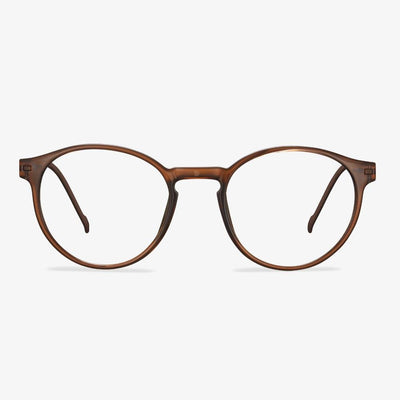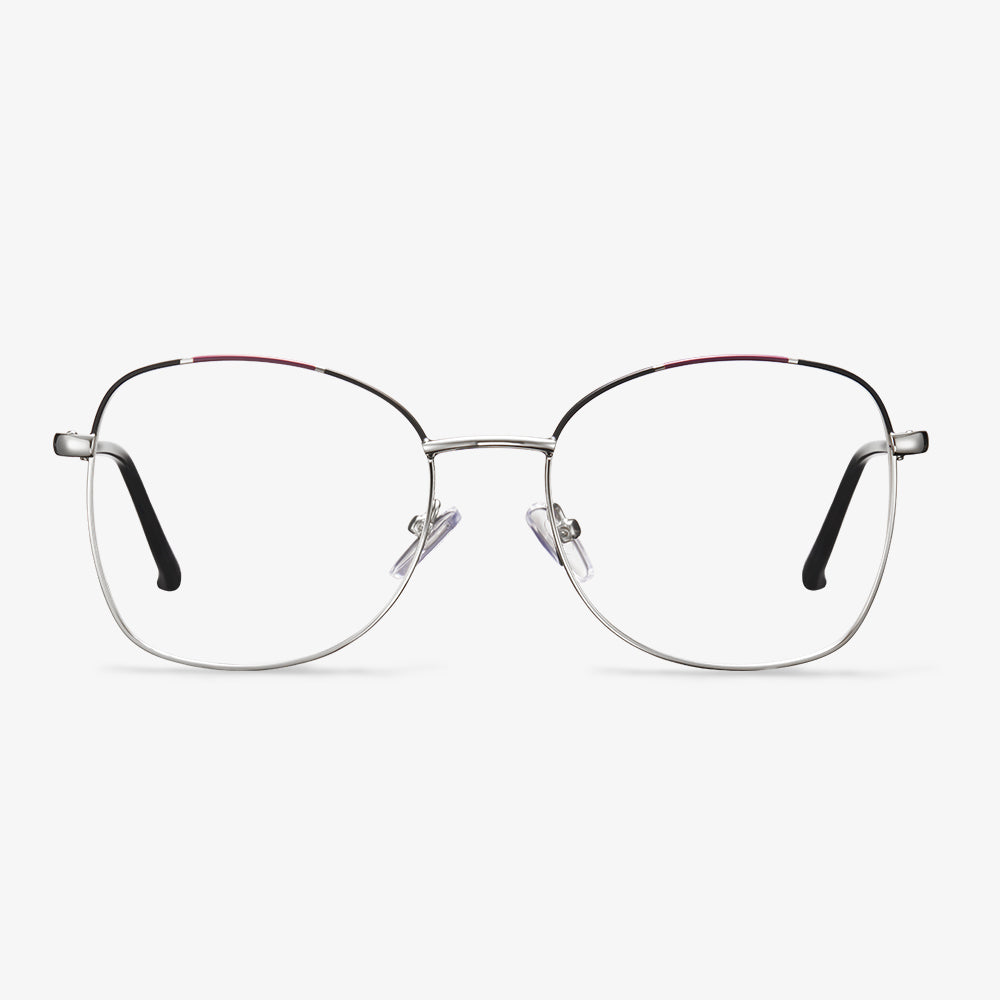Select qualified optical lenses.
Anti-blue light lens must be qualified optical lens first and must have a certain percentage of anti-blue light effect. The general anti-blue light optical lens effect is about 30%. Even if it is not nearsighted people, it is best to choose the brand lens of reliable optical lens production enterprises. Anti-blue light lens is only suitable for people who use electronic display devices such as computers for a long time and is not suitable for patients with visual fatigue symptoms.
What's wrong with your not clear phone's screen, low brightness, or even black screen when wearing polarized sunglasses?
There is a polarizing plate in the display structure of the mobile phones, which comes from the photoelectric modulation effect of the display screen. There is a polarized light absorption axis in the polarizing plate, which is consistent with the polarized light absorption principle of the polarized sunglasses. If the polarization absorption axes of the two are parallel, the screen can be seen. When they are perpendicular to each other, the light emitted by the screen will be absorbed by the sunglasses, and the light cannot reach the eyes, leading to the phenomenon of the black screen or low brightness. There may be differences in the direction of the absorption axis of the polarizer. So after wearing the polarized lenses, when you see low brightness or black screen, there are two different situations: landscape screen and portrait screen.
What is cellulose acetate?
Cellulose acetate refers to a thermoplastic resin obtained by esterification with acetic acid as a solvent and acetic anhydride as an acetylating agent under the action of a catalyst. It is the first commercially produced and continuously developed fiber among cellulose derivatives. Vegetarian organic acid esters.
RIVBOS Polarized Sports Sunglasses for Driving
TAC Polarizing Lenses - RIVBOS lenses are made from cellulose triacetate (TAC) material. TAC has quality optical properties that prevent the shrinkage of PVA polarized light film and has high strength surface scratch resistance. They help restore the original color, eliminate reflected and scattered light, and provide perfect eye protection. Rivbos frames are made from durable TR90 material. These polarized sunglasses feature flexible, stress-resistant frames that are able to withstand pressure without breaking. Whether it's sports or casual, you can show off your unique style.
What are blue light blocking glasses?
As we now spend more and more time on the screen, it is particularly important to pay attention to the effects of blue light. Approximately six out of ten adults will experience digital eye fatigue after using the device for more than 2 hours. Symptoms of digital eye fatigue include headaches, blurred vision, and dry eyes. The technology of blue light blocking glasses can effectively block part of the blue light damage to the eyes, reduce the visual fatigue caused by staring at the electronic screen for a long time and can also reduce the radiation and damage of ultraviolet rays to the eyes. However, the most important thing for eye protection is development. Good eye use habits, close your eyes regularly, and let your eyes rest.
Blue light blocking glasses are glasses that the manufacturer claims can filter out blue light. The lens of this kind of glasses has filter material or surface coating, which can block part of the blue light. People who believe that their eye and vision are damaged by blue light exposure may wear them to reduce blue light exposure.
Blue light is a short-wave blue light in the color spectrum visible to the human eye. Its wavelength is in the blue part of the electromagnetic spectrum, roughly 400–500 nanometers. Researchers believe that peak light damage occurs at approximately 440 nanometers. Computers, laptops, tablets, smartphones, and general lighting can all expose the eyes to blue light.
Parameters of lens material selection
Abbe number
Since the refractive index of the lens material varies for the light of different wavelengths, and white light is made up of various colors of light of different wavelengths, the dispersion phenomenon occurs when the lens refracts white light. The dispersion coefficient is an important index to identify the sharpness of lens imaging, which is usually indicated by Abbe number (Abbe number = dispersion coefficient). The larger the Abbe number, the smaller the dispersion, and vice versa, the smaller the Abbe number, the larger the dispersion, and the worse the resolution of the image.
Impact resistance
Humans have been using glass lenses for about 300 years, and it was not until 1947 that the first resin lenses made of CR39 were produced. A big reason for using resin lenses is their safety, i.e. impact resistance. Only lenses that pass the Drop Ball Test are considered safe. Combining the above two parameters, we can compare different lenses.
The frame size has increased.
The larger the frame is, the more obvious it is now, so the edge glare will be more obvious when the lens is polished. It interferes with the visual effect. The frame height of the new glasses must be much larger than the height of the old glasses. Because when you buy big frame glasses, they must find out the pupil height when matching outfits. When you get glasses fitted at the opticians, the opticians don't measure the pupil height. That is, the balance line of the lens should be properly moved up when the lens is processed. If it is not moved up, it cannot be seen clearly.











































